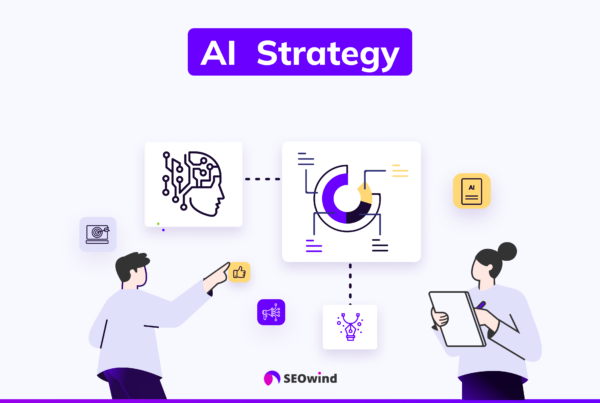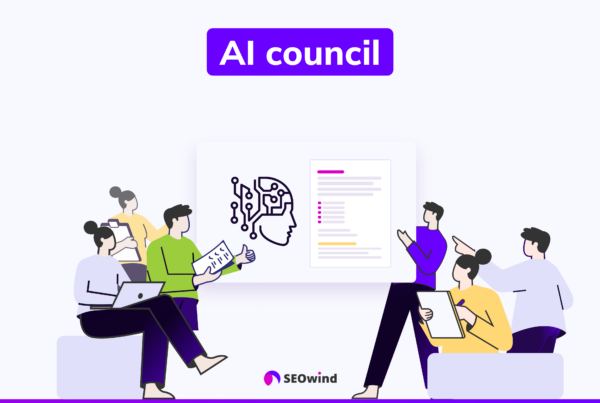A well-crafted B2B content marketing funnel equips you with a compass that steadily points toward growth and success. Imagine transforming casual browsers into loyal customers, one strategic piece of content at a time. That’s the magic we’re about to explore together.
Introduction to B2B Content Marketing Funnels
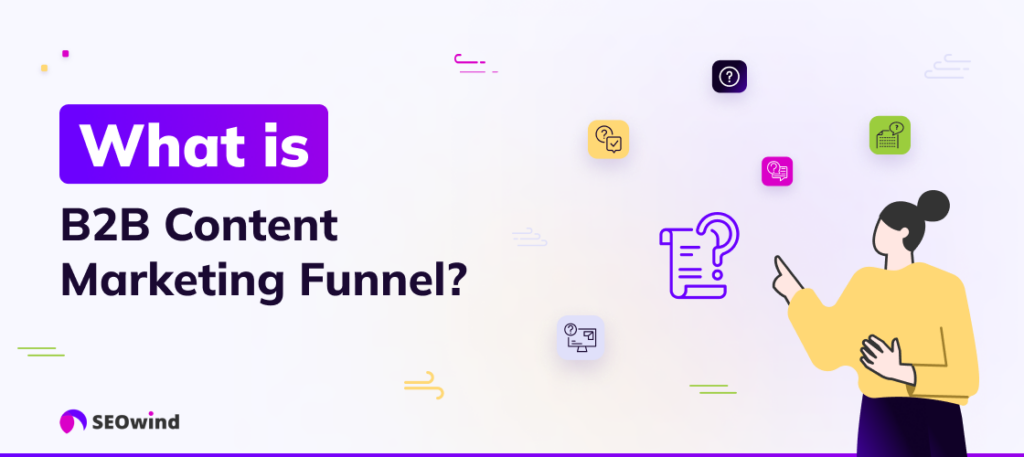
A sound B2B content marketing funnel is not merely a strategy but an adventure. It’s your brand’s narrative journey from obscurity to prominence, guiding potential clients through various stages until they decide that your solution is what their enterprise needs. But this isn’t just storytelling; it’s about constructing relationships built on trust and value through meticulously crafted content.
The B2B content marketing funnel is an intricate mechanism designed for effectiveness and efficiency in customer acquisition and retention. It operates on insights gathered from understanding your audience’s needs, wants, and pain points, aligning them with tailored messaging that resonates at every interaction.
This nuanced conduit of information delivery extends beyond mere advertising; you need to create meaningful experiences that educate, engage, and empower your prospective clients to make informed decisions favorably inclined toward your offering.
So, let us embark on this expedition together as I guide you through crafting your own B2B content marketing funnel. This indispensable beacon elevates your sales and strengthens your market foothold amidst the vast sea of competition.
Differences between B2C and B2B Content Marketing Funnels
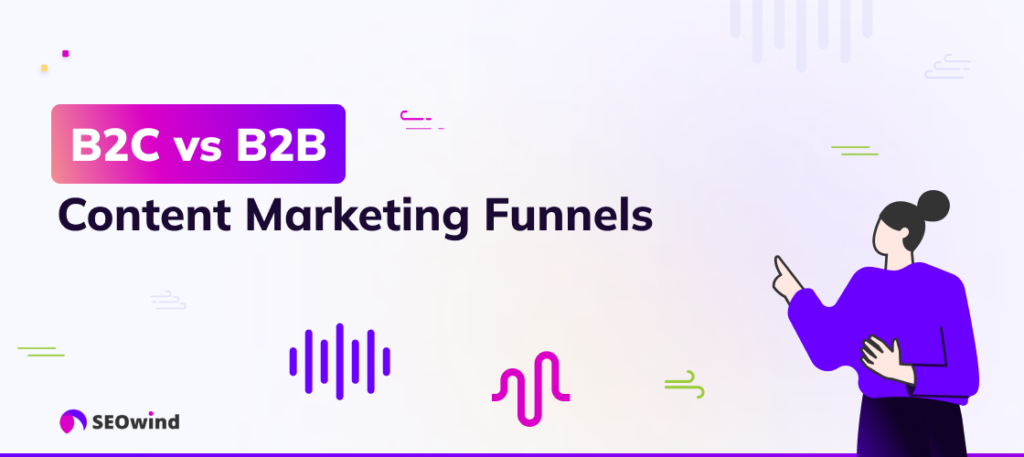
Navigating the landscape of content marketing funnels may sometimes feel like deciphering an old map filled with marked territories representing different consumer behaviors. It’s crucial to recognize the signposts that distinguish one from the other, especially when it comes to understanding the intricacies of B2B versus B2C marketing funnels.
The Path Walked by Decision-Makers
In a business-to-business (B2B) environment, purchase decisions are typically made by committees or groups after careful consideration. This results in longer sales cycles compared to business-to-consumer (B2C). With more touchpoints, a B2B funnel needs more detailed content at each stage to inform and convince all stakeholders involved.
Emotional Appeal vs. Rational Convincing
Whereas emotional triggers and instant gratification often drive the consumer journey, the B2B process is rooted in logic and value proposition. While a captivating story might clinch a sale with consumers, B2B requires case studies, whitepapers, and hard data to build trust in complex sales environments.
Budget Implications
A mistake might mean disappointment or frustration for individual consumers but not calamity. In contrast, selecting the wrong service or product for businesses could mean ripples across departments or even seismic tremors in profitability.
Crafting content for either funnel isn’t merely about adjusting your lexicon but tailoring your entire narrative approach to meet expectations. Understanding these subtleties paves the way to crafting compelling narratives that resonate with their intended audience, be they stories woven with emotions for end-consumers or sagas of success backed by evidence aimed at businesses.
Why is a B2B Content Marketing Funnel Important?
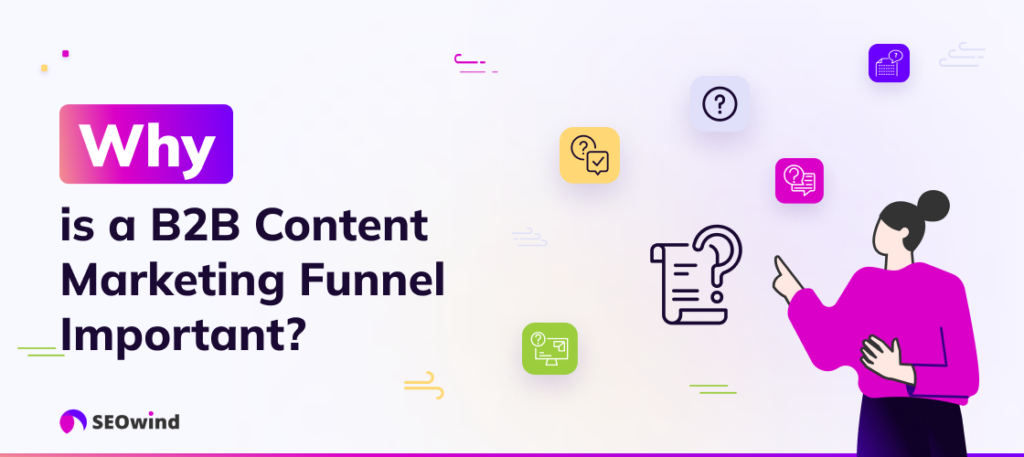
Imagine you’re navigating through an unknown forest, where each path leads to different territories with their own challenges and rewards. You need a map to avoid getting lost and to reach your treasure. This is where a B2B marketing funnel becomes indispensable.
A B2B content marketing funnel isn’t just a fancy concept; it’s the backbone of understanding how potential clients interact with your content before they make the leap from interested onlookers to paying customers. At its core, the funnel helps visualize the buyer’s journey and its decision-making process: awareness, contemplation, and finally, action.
Nurturing this client relationship is critical for B2B transactions, which often involve significant investments and longer sales cycles than consumer purchases. With multiple stakeholders involved in purchase decisions, offering timely and relevant information throughout their buying process can give you an edge over competitors.
Here’s why mastering the B2B sales funnel can be a game-changer:
Targeting Precision
Understanding where your potential buyers are within the B2B sales funnels allows tailored messaging designed for their stage of interest or concern. Precise targeting means more effective use of resources and a higher chance of resonating with prospects.
Efficient Lead Nurturing
Each step in a B2B marketing sales funnel represents an opportunity to nurture leads by providing valuable insights about their interests or business pain points. A well-maintained funnel keeps them engaged and moving toward making a purchase.
Increased Conversion Rates
Understanding paths within the B2B funnel helps pinpoint drop-offs or sticking points that could be causing potential clients to lose interest or go elsewhere. Addressing these issues enables smoother transitions from one stage to another, increasing overall conversion rates.
Customer Journey Insights
The data collected at every phase of the B2B marketing funnel reveals patterns in customer behavior and preferences, allowing you to adjust strategies to serve your audience’s needs better while highlighting areas of success that can be scaled up.
Neglecting this strategic tool might mean missing out on insightful data-driven adjustments crucial for thriving in today’s competitive environment. The question is then no longer, “Why should I use a b2b content marketing funnel?” but, “Can I afford not to?”
Using this systematic approach empowers marketers with foresight. It’s like having night vision goggles in our metaphorical forest. The tool illuminates who is ready to talk shop (and spend) versus those who need more wooing. Investing time crafting a formidable B2B content marketing strategy around your funnel stages isn’t just smart; it’s indispensable for turning cold prospects into long-term partners.
Steps to creating a B2B content marketing funnel
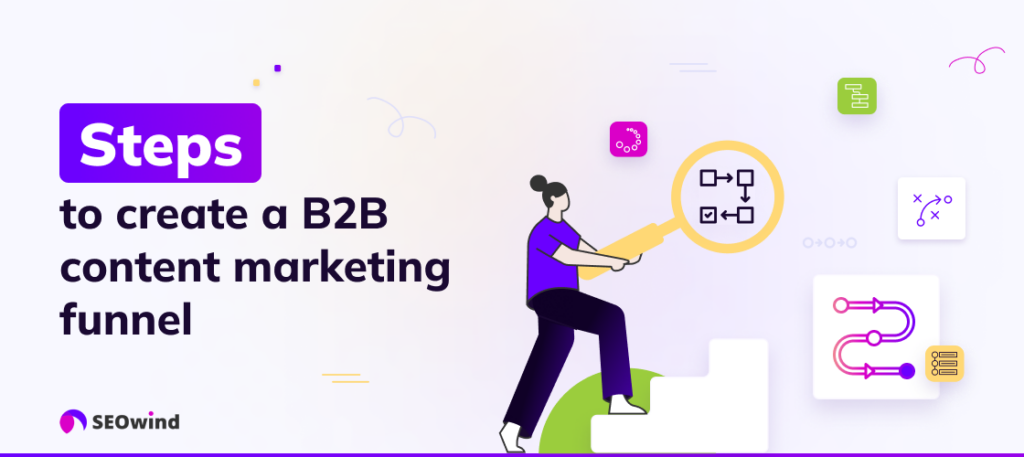
Creating an effective B2B content marketing funnel is an art as much as a science. Let’s review the steps you’ll want to follow while crafting a robust funnel that stands tall against the test of competitive markets.
Step 1: Understanding your target audience
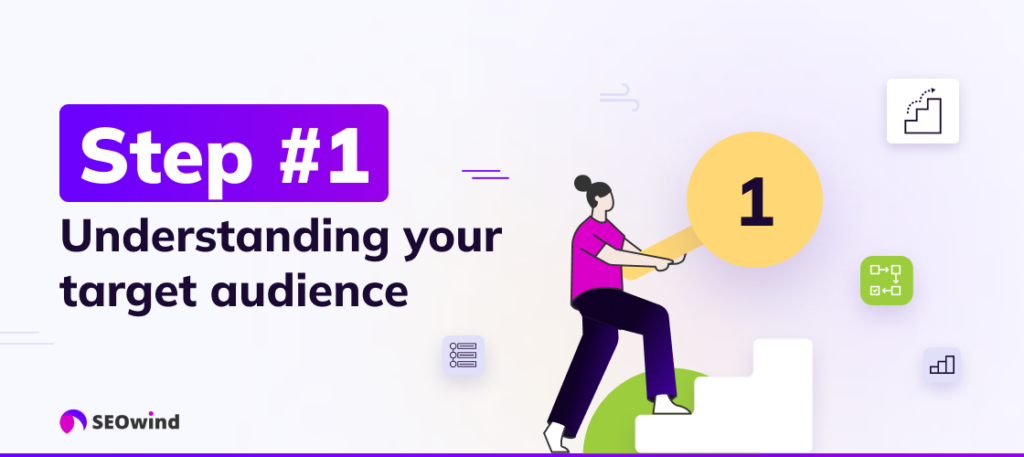
Picture setting sail on uncharted waters without a map or compass. That’s akin to building a marketing funnel without first understanding your audience. It’s essential to begin by identifying precisely whom you’re speaking to, their challenges, and the solutions they want to find. A thorough comprehension of your target audience allows you to tailor your messaging and content in alignment with their needs and pain points.
In order to get to know your customers better, you can:
- Conduct surveys or interviews with current clients
- Analyze industry reports and case studies
- Delve into forums and social media groups where potential clients gather
- Look at competitor websites not just as rivals but also as codes to crack. What audiences are they reaching?
Once you’ve gathered detailed demographic data, dug deep into their needs and pains, and mapped out customer personas, you can create laser-focused content that resonates personally with your audience.
Step 2: Planning content for the entire funnel
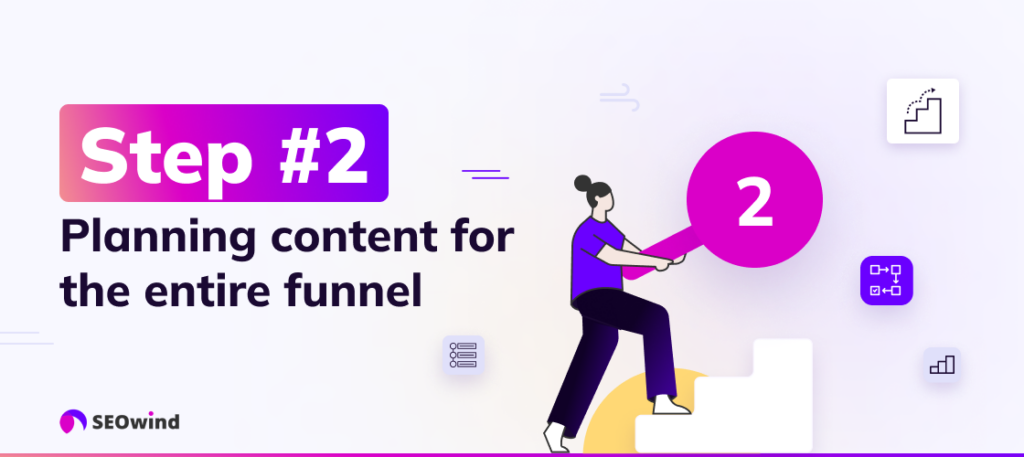
Now that you’ve got a grip on who’s receiving your message, it’s time to plan how that conversation unfolds across each stage of the buyer’s journey.
When planning content:
- Begin with awareness—the foundation—where educational pieces like blog posts or social media updates are incredibly impactful.
- Move on to consideration with more in-depth resources like ebooks, webinars, or comprehensive guides that showcase expertise.
- Finally, help your potential customers make the decision, where case studies, free trials, or live demos can convince prospects it’s time to partner up.
Strategically developing this blueprint ensures you never miss an opportunity to communicate value throughout all interaction stages.
Step 3: Analyzing and optimizing content performance

Launching any project is thrilling, but what comes next—measuring and refining—is where actual growth lies. Envision releasing paper boats downstream; studying how they fare against the current tells us how we might craft better vessels tomorrow.
Dive into analytics tools regularly. Don’t just glance at views or likes but seek deeper insights into engagement metrics such as
- Time spent on a page,
- Sharing rates,
- Conversion from call-to-action prompts.
Adjustments must be data-driven:
- Revisit underperforming content to consider its relevance, clarity, or positioning.
- Recognize star performers to replicate success factors across other materials.
Remember that perfecting this process is an ongoing effort as dynamic as the constantly shifting winds of market trends. It requires persistence and agility to continually elevate sales by honing your B2B content marketing funnel.
Creating content for each stage of the B2B marketing funnel
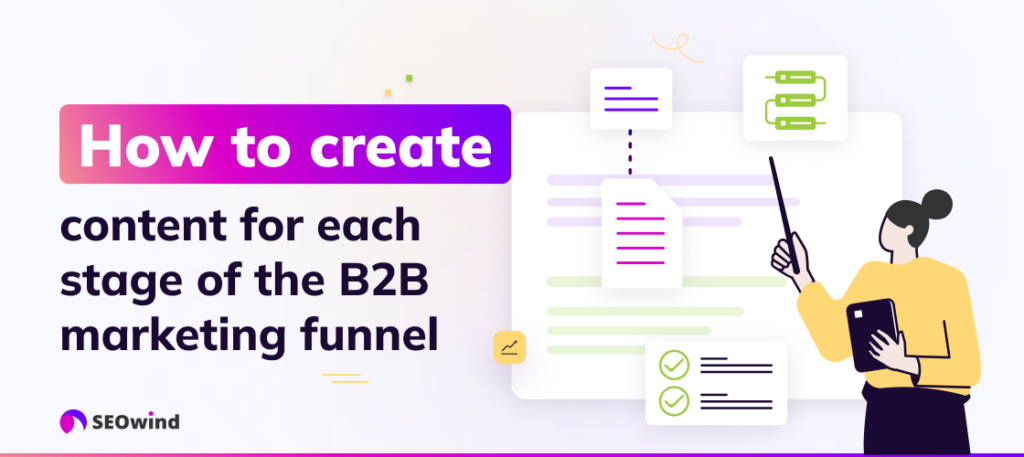
An effective content marketing funnel bridges the gap between potential leads and loyal customers. In B2B scenarios, this involves a deep understanding of your market’s distinct needs at each phase of their journey. Let me teach you how to curate content that hits the mark for every stage of the B2B sales funnel.
Awareness: Top of the funnel
Top of Funnel (TOFU) is all about crafting visibility. Your goal is to catch the eyes of potential leads through informative, engaging, and SEO-rich content that answers their initial questions or sparks new curiosity.
At this initial stage, your prospective client may be experiencing challenges or seeking information but has yet to identify potential solutions. Their quests are exploratory rather than definitive.
They are best served by content such as:
- Educational Blog Posts: Write detailed posts on issues relevant to your target industry. Aim to educate first and sell second.
- Infographics: Create visually appealing infographics to make complex data easily digestible.
- Ebooks and Whitepapers: Offer comprehensive guides that display thought leadership without demanding commitment.
- Social media updates: The digital smoke signals for immediate reach and engagement.
- Infographics: Condensing data into visual stories for easy digestion.
This type of content should be accessible, shareable, and, importantly, free from heavy-handed sales pitches that can drive potential customers away rather than drawing them in.
Consideration: Middle of the funnel
Now that seeds of awareness have sprouted interest, your audience wants more than surface knowledge; they’re considering options closely.
Building trust and nurturing leads in the MOFU stage
To build upon that initial trust:
- Interact through personalized email campaigns designed around pain points you know they’re experiencing.
- Host webinars where real-time questions can be addressed, adding a human touch to digital interactions.
At this point, it’s crucial to deepen engagement by blending relatable stories with compelling data. Doing so establishes you as a guide and confidant on their purchasing journey.
Effective content formats for the MOFU stage
Including concrete use-case scenarios tends to resonate well:
- Case Studies: Share success stories from clients similar to your prospects.
- Product Demos/Videos: Show rather than tell how your offerings work, revealing practical benefits.
- Thought-Leadership Pieces: Exploring future implications within your industry sector.
Demonstrating genuine interest in resolving buyer-specific problems cements brand credibility and expands your audience’s appetite for final-stage commitments.
Decision: Bottom of the funnel
The decision-making horizon! Where previous stages were casting wide nets, it’s now about precision targeting to transform interest into action decisively.
Strategies to convert leads into customers in the BOFU stage
Here’s where sales-oriented materials take center stage:
- Release comparison sheets showcasing why you outmatch competitors in meeting customer needs.
- Provide free trials or demos explicitly tailored to individual queries raised during earlier stages.
Tether past interaction history with direct calls-to-action with content created expressly to achieve resolution.
Types of content that encourage decision-making
At this junction, you’re looking to give customers the fine tools they need to make a choice. They’ll be looking for content like:
- Testimonials/Reviews: Offer insights from other businesses who took the leap and let peer validation ease lingering hesitations.
- Dedicated Sales Pages/Landing Pages: High-converting pages should focus on how opting for your solution solves challenges your audience faces,
- Detailed product comparisons tailored per prospect profiles,
- Personalized presentations that summarize buyer pains and your solutions,
- One-on-one consultations to address specific questions in reaching a final decision.
Your focus should be on reassuring would-be clients about what they’ll get while reaffirming why choosing you equals wisdom sans regret.
Advocacy: Post-purchase
The journey through the B2B content marketing funnel doesn’t culminate with the sale. Far from it! In fact, this is when another critical phase begins: nurturing post-purchase advocacy. How you engage with customers after they’ve made a purchase can transform one-time buyers into vocal advocates for your brand.
Cultivating Brand Champions
Think of your customers as seeds you’ve just sown. As any gardener knows, seeds need ongoing care to grow. Similarly, fostering strong relationships with customers post-purchase can result in clients willing to spread the word about your business enthusiastically.
- Personalized Follow-Ups: Reach out to new customers with messages tailored to their industry or usage patterns. Doing so shows that you view them as individuals rather than transactions.
- Exclusive Offers: Consider offering loyal customers first dibs on new products or services, discounts, or other incentives that make them feel valued and special.
- Soliciting Feedback: Requesting feedback provides valuable insights and makes customers feel involved and considered.
By investing time to understand their evolving needs and responding accordingly, you essentially water these seeds, encouraging them to grow deep roots with your brand.
Encouraging Story-Sharing
Real stories resonate deeply within B2B circles, where trust is paramount. When satisfied clients share authentic experiences of how your product or service has improved their operations, it has a magnetic effect:
- They unknowingly serve as convincing salespeople, touting not just what’s good about your offering but how it slots seamlessly into real-world business environments.
- Their testimonials often carry more weight than branded content since peers view them as reliable sources.
Applying a gentle nudge for story-sharing across platforms via reviews, case studies, and social media endorsements can work wonders for spreading organic awareness.
Facilitating Community Building
Lastly, consider developing spaces where clients can interact, such as forums, online groups, or webinars. Here’s why this matters:
- When connecting in such communities, clients naturally evolve from users to champions, sharing knowledge and best practices related to your products.
- It fosters an ecosystem where clients draw value beyond the immediate scope of the products they’ve purchased.
Remember that just because a deal is inked doesn’t mean the conversation ends. Today’s market is too interconnected for siloed customer journeys. Instead of thanking a customer and moving on after a sale, you should always consider what comes next! This mindset shift toward fostering long-term client relationships will lay the groundwork for lasting loyalty, inevitably leading to advocacy, the most coveted zone in the buyer’s journey for any brand.
Identify and measure customer engagement metrics at different stages
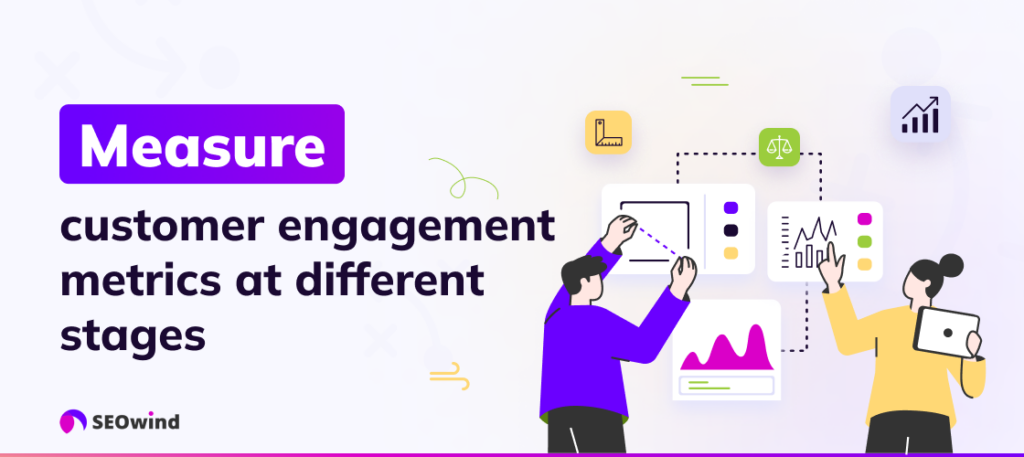
When crafting a B2B content marketing funnel, our navigation compass is data. We must track and measure how potential customers interact with our content at each stage of this funnel. This informs us about what’s working and empowers us to refine our strategy to better align with our audience continuously.
Reflect on each step a lead takes as if following footprints in the sand. Each imprint tells a story of engagement or disinterest. Here’s how you can trace these stories:
Awareness: Top of the funnel
- Social media impressions and shares
- Website Visitors
- Blog post reads and time spent on the page
These metrics provide insight into the reach of your content and its ability to captivate an audience just beginning their journey.
Consideration: Middle of the funnel
- Content downloads (ebooks, white papers)
- Webinar registrations and attendance
- Email newsletter sign-ups
Here, engagement levels rise to more involved actions, indicating that your messages resonate with people seeking deeper knowledge.
Decision: Bottom of the funnel
- Free trial sign-ups
- Requests for quotes or demos
- Conversion rates from specific calls-to-action (CTAs)
At this decisive stage, measuring interactions should focus on conversion-oriented behaviors showcasing readiness to purchase.
By observing these metrics, you cultivate a dynamic bond with your audience. Adjusting your approach based on data fosters trust encourages dialogue, and ultimately leads to building lasting customer relationships grounded in value exchange rather than mere transactions. Remember, attention to detail is crucial. After all, even small shifts can signify profound insights that lead to sales elevation.
